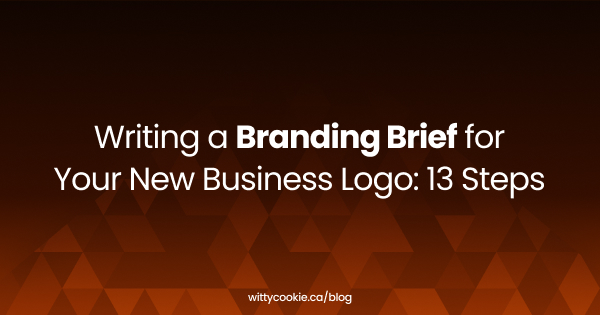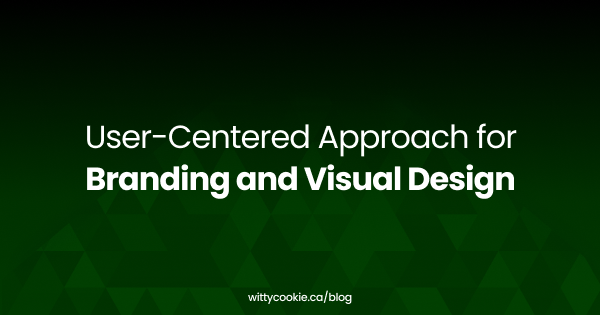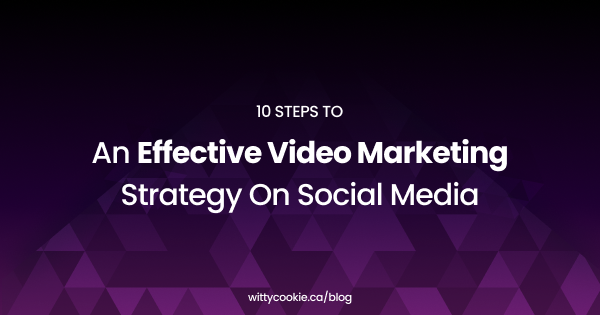Writing a Branding Brief for Your New Business Logo: 13 Steps
Branding and brand image can be vital for the success of a business, no matter the industry or type of business in question. The presentation and the picture that you create in the minds of your clients and customers will heavily influence their relationship with you. This is why businesses need to walk the extra mile to combine all the right elements into their branding strategy and present their business like professionals.
One of those crucial elements is certainly your business logo. While it’s not the sole most important element of your brand image, you can’t go very far without it. And, when there’s a need for a new business logo, there’s a need for writing a strong logo branding brief.
If you’re not sure what a logo branding brief is, or why you even need one, we’ll help you understand. This article breaks it all down for you.
Why is Branding Important?
Before we dig deep into the writing, let’s take a moment to understand the importance of handling your branding professionally and thoroughly. All we need to do is answer the following question:
- Why is branding important for my business?
It’s simple, branding helps you stand out from the sea of competitors you have and build your own story in the crowded market you’re in.
Your target customers are exposed to new brands daily, through social media and different kinds of marketing. If you want to stand out from those people and offer something unique, your branding is your strongest tool.
Why?
Because it helps you:
- design and present a personality behind the brand
- evoke certain emotions and associations with consumers
- create a story behind the products and services
- build trust and long-term relationships with your customers
Not to mention that proper branding will make your brand more recognizable which will lead to having more loyal customers. Thus, you need to take branding seriously and work hard on creating the image you design.
Why You Need a Strong Logo?
As we’ve already mentioned, your business logo is one of the key components of your branding. It combines and presents all the visual elements of your brand image:
- the colors
- the fonts
- the shapes
This visual aspect is important since you’ll be using variations of it to present your business in all other forms, from social media posts to email copies.
We all know what the Coca-Cola logo looks like, right? They use the same motives in other visual presentations, like in the example below.

And, as your logo becomes widely accepted, its function shifts from the visual presentation to the emotional one. That means that your logo will also reflect your:
- personality
- versatility
- level of formality
- type of business you’re running
That means that a well-designed business logo can speak a thousand languages. And, if you have a strong idea of what you want from your logo, you’ll need a branding brief to ensure you get it.
What is a Logo Branding Brief?
A logo branding brief is a document you’ll use to ensure you and your logo designer are on the same page. It’s a written presentation or summary of what you want from your logo design and what you expect the designer to deliver.
Why is this important?
Well, your logo will represent your business for years to come and you have to be certain your designer understands you and your business.
So, the logo branding brief will summarize:
- your ideas and expectations
- the designers’ tasks
- the main aspects of your collaboration
- the desired outcome
After the designer reads it, they’ll know exactly what to do, and won’t have to suffer numerous corrections from your side. You’ll be happier with the results they deliver and the results of the project.
It’ll help both you and the designer enjoy this collaboration and easily reach your mutual goals.
13 Steps to Write the Branding Brief for Your New Business Logo
Now that you understand how important it is to have a well-designed logo and thus a well-written branding brief, it’s time for us to get to the writing part.
Writing a logo branding brief is a time-consuming process that requires your full attention and a lot of energy. But, once you finish writing it and submit it to your designer, you’ll feel relieved and confident about the upcoming collaboration.
Luckily, with the 13 steps we’ll list below, you’ll be able to write a branding brief for your new business logo without much trouble.
Here’s what you need to include in it and how to do it properly.
1. Introduce Your Business
As we’re already covered, your logo needs to represent your business- not just visually but in every other sense as well. This is why your designer needs to understand your business before they start working on the logo.
The first section of your logo branding brief needs to introduce your business and provide a brief overview of who you are and what you do. Include the following most important information:
- your business name
- your industry and specific target market
- the products and services you provide
- the story behind your business
- your mission and vision
- your main goals
If you’re sending the brief digitally, you can include links to your website, social media, and other online accounts. In case you still don’t have a website, you should check out these Black Friday Web Hosting Deals, to find the best offer.
This information is essential and will get the designer’s creative juices flowing. As they read, they’ll slowly build an initial idea of the general aesthetics and visual elements. Milk Jar Candle Co has cleverly used a cute icon that is heavily associated with their brand as their profile photo.

source: Instagram
You don’t need to elaborate extensively. Just provide the information necessary for the designer to get to know you a bit better. You’ll provide more details later on.
2. Explain Your Audience
The next thing you want to clarify to your logo designer is your target audience. Why? Because they are their target audience on this project as well.
You should explain who they are and what they expect from your business, to help the designer find the right solution for a logo these people will love.
When explaining your target audience, including the information that will truly benefit the designer:
- their demographics (age, sex, social status)
- their interests
- their needs and pain points
- how and why they use your services
- their typical online behavior
It’s a huge difference for the designer if your target audience is millennials focused on environment protection or Gen Z interested in technological growth.
So, be precise once again, and write a concise overview of your target audience.
3. Explain Your Position on the Market
You want the designer to have a complete idea of where you stand as a business. This will make it easier for them to help you reach your business goals and move forward.
Your position on the market matters to them, so make sure to include this section. Based on the data you have, share insight on:
- your biggest competitors
- what they’re currently doing
- how you rank on the market
- potential market gaps you want to fill
- your vision for the future and changes you need to make
This information will allow the designer to do some additional research and get a better understanding of your entire story. The more they know about you, the better job they’ll be able to do.
4. Discuss Your Branding
The branding and creation of your new business logo need to align with the overall branding of your business and the rules you’ve already decided to follow. Branding is like storytelling- there are all kinds of details and pieces of the puzzle that need to fit together.
Your logo branding brief needs to tell this story.
So, explain what your branding strategy consists of, and what is the story behind the brand that you want the audience to adopt. This section needs to cover:
- the type of personality your brand has e.g. playful, youthful, serious, strictly professional
- the tone of voice you use consistently on social media, emails, your website, etc.
- the brand image you want to build i.e. how you want people to perceive you
- the customer experience you aim to provide
- your differentiation from other similar businesses
 |
 |
| source: Mont Blanc | source: mms.com |
When you put all of these elements together, you get the branding strategy of your business. Your designer will understand the place you’re coming from. This will help them create a logo design that fits your story and matches the rest of your branding elements perfectly.
In case you need consulting about your branding, and someone to help you figure out what branding guidelines to follow, you can check out WittyCookie. They offer free consultation and professional branding and positioning services.
5. Include Your Slogan/Tagline
From “I’m lovin’ it” to “Just do it”, slogans can be a true advertising powerhouse and a recognition tool that brands rely on when raising brand awareness. If you have a slogan your own, you’ll want to run it by your logo designer.
This short message sums up the essence of your brand and further explains your branding strategy to those around you.
Share your slogan in the branding brief as another valuable part of your story.
6. Define Logo Type Preferences
As a business, you’re entitled to decide what type of logo you want to have. We strongly suggest you allow the designer to have a say in it since they have way more experience and expertise to choose the type of logo a business needs.
That’s why we’re saying you should define logo preferences, not make the final decision.
Tell them what type of logo you’d like to have:
- emblem
- symbol
- monogram logo
- abstract mark
- mascot
- wordmark/logotype
 |
 |
 |
| source: Wikipedia | source: Wikipedia | source: Facebook |
You can include a sentence or two about why this specific type of logo attracts you the most and why you’d like it to represent your business. But, leave room for the designer to step away from it, if they feel like a different type of logo will tell your story better.
7. Set Color Palette Preferences
Colors can speak. There’s a whole branch of psychology dedicated to color and the associations they create in our minds.
So, choosing the right colors for your new business logo is a huge deal.
You should thus set color palette preferences in your logo branding brief and give your designer additional guiding points for the visual aspect of the logo. You can discuss:
- the colors that you’re considering
- the dominant color
- the contrasts
- different shades and tones of the preferred colors
You can even include samples of the precise color nuances or the color combinations you have in mind. Adding these visual elements to your branding brief is smart and will help you get the right results with your new design.
8. Discuss Shapes
Shapes are another important aspect of a logo and the branding strategy in general. Shapes also influence the way people perceive a brand and if selected properly, they can support your brand image.
So, if you do know what shapes you’d like to combine and use, include this information in the branding brief. You can choose between:
- straight lines
- abstract shapes
- curves
- circles
- rectangles
- triangles
- jagged edges
 |
 |
| source: Wikimedia | source: Wikimedia |
There are so many choices, and you can suggest one or more options for your logo. Once again, remember that you need to trust the designer to choose the shape that fits the whole story best.
9. Do a Font Selection
If your logo contains any words, abbreviations, or letters of any kind, fonts are another thing you need to consider, and eventually include in your branding brief.
You don’t have to choose a specific font type and tell your designer that’s what you want. But, you can share preferences about the type of font you’d like to see:
- script
- serif
- sans serif
- display
- decorative
Go through as many fonts as possible and check out famous brands’ logos to get an idea of what exists and how fonts influence the overall appearance of a logo. Then, discuss your choices in the logo branding brief and add visual examples if you find them necessary.
 |
|
| source: Wikipedia | source: Wikimedia |
10. Clarify Timing
Once you finish with the creative aspect of your logo branding brief, it’s time to focus on the technical part. Time is of the essence for most brands and businesses which is why you’ll need to clarify when you expect this logo to be finished.
If you leave this part out, you’ll risk having the designer stall the job and finish much later than expected.
You can define:
- the start date for the project
- the deadlines for the completion of each stage of the project
- the final deadline for the completion of the entire project
The designer will either accept this or make slight changes, but you must have it all on paper once you agree.
11. Set a Budget
Logo design can be a pricey item on your budget list, and you need to be certain how much money you’ve got to offer to the designer.
Don’t make any assumptions- ask around to see how much do professional designers charge for a logo design. Also, talk to your potential designer to clarify details such as:
- whether they charge per hour or per project
- how many hours will they need, roughly estimated
- does the per-project price include revisions and edits
- will they need an upfront payment
- how will you pay them at the end
This is best to be discussed in person, and then defined and stated in the logo branding brief. That way, both parties know what the agreement is, and can engage in the project without worries about the budget.
12. Explain Your Goals
Finally, you need to explain your main goals for this potential collaboration to your designer. In other words, you need to tell them what do you expect to achieve.
So, think about the main reasons you’re creating a new business logo and answer these questions:
- Why do I need a new business logo?
- What do I want to achieve with it?
- How do I want people to respond to it?
- Where and how will I be using it?
- How will I measure the success of this project?
Your goals can differ, from raising brand awareness to rebranding for a new market. Whatever it is, explain it in your logo branding brief as a final piece of information that puts it all together.
13. Proofread
Now that you’ve written all the sections of your logo branding brief, you need to check the accuracy of your writing. This is to avoid seeming unprofessional and sloppy. You don’t want to leave a wrong first impression on the designer.
So, read the finished logo branding brief several times, and:
- change and edit until you’re satisfied
- proofread using online proofreading tools
You can even get professional editing help at GetGoodGrade, to ensure each word is in its place. Once you finish editing and proofreading, you can send the logo branding brief to your designer.
Final Thoughts
A logo branding brief is one of the key elements in the process of getting a new logo and securing a professional and smooth collaboration with a designer. It helps you define and achieve your goals, without exchanging hundreds of emails or phone calls with the designer.
The 13 steps we’ve listed above may seem like a lot of work at first. But, you’ll soon realize that writing a branding brief for your new business logo can be simple and easy if you just follow our guide. Hopefully, you’ll be happy with the results of your work!
Author’s bio. Jessica Fender is a copywriter and blogger at Writeload with a background in marketing and sales. She enjoys sharing her experience with like-minded professionals who aim to provide customers with high-quality services.



